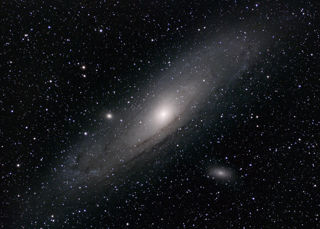
Europa Scale Model
Europa Scale Model
Scale model of Jupiter’s moon Europa. It is a 1:7,000,000 scale model, based on an estimate of Europa’s diameter to be 3,122 kilometres. Europa was first discovered by Italian astronomer Galileo Galilei and is one of Jupiter's four largest moons. Named after their discoverer, the Galilean moons consist of Ganymede, Callisto, Io and Europa in descending size order.Europa is one of the Solar System's best candidates for being able to harbour life. Covered in a water-ice crust, many scientists believe that it also has an iron-nickel core and possibly an ocean of warm, salty-water under its icy surface. This theorised ocean of water is thought to remain in a liquid state thanks to tidal heating caused by its proximity to Jupiter. Jupiter's gravitational pull, along with the gravitational impact of the other Galilean moons, creates tidal friction and tidal flexing effects that create heat inside the moon. As Europa orbits Jupiter, the distance between the two varies - therefore changing Jupiter's gravitational pull on Europa. As the pull increases and decreases with distance, Europa is repeatedly stretched and squashed - producing heat.
The surface of Europa is one of the smoothest in the Solar System, despite being covered in a crisscross pattern of dark cracked features, known as lineae. These lineae are represented clearly on the model, but they lack the red colouration that newly processes NASA images have uncovered (see pics). The red colouring has been explained by the existence of non-ice material in these cracks. Bright white water-ice makes up most of Europa's surface; the contrasting red non-ice materials may be connected to briny deposits being brought up from beneath - either from the subsurface ocean or from pockets within the ice. The reddish colour is likely caused by mixing with sulfur - possibly from Io's volcanoes - as well as being exposed to extreme radiation.
Much is still to be discovered about Europa. Its position as one of the most geologically active and exciting moons of the Solar System has made it a prime target for future space missions.
All images:
-
![Europa Scale Model]()
Europa Scale Model -
![Europa Scale Model]()
Europa Scale Model -
![Europa Scale Model]()
Europa Scale Model -
![Europa Scale Model]()
Europa Scale Model -
![Europa Scale Model]()
Europa Scale Model -
![Scale model of Jupiter's moon Europa, alongside the other three Galilean moon models]()
Scale model of Jupiter's moon Europa, alongside the other three Galilean moon models -
![Newly processed composite colour image of Europa produced from data sent back in the 1990s by the Galileo spacecraft. Areas of white/blue are pure water ice, whilst red/brown areas have more non-ice materials - Credit: NASA/JPL-Caltech/Seti Institute]()
Newly processed composite colour image of Europa produced from data sent back in the 1990s by the Galileo spacecraft. Areas of white/blue are pure water ice, whilst red/brown areas have more non-ice materials - Credit: NASA/JPL-Caltech/Seti Institute -
![Artistic impression of the possible interiors of Europa, including the liquid ocean theory - Credit: NASA/JPL]()
Artistic impression of the possible interiors of Europa, including the liquid ocean theory - Credit: NASA/JPL -
![The Galileo Manuscript - Draft of a letter to Leonardo Donato, Doge of Venice, August 1609, and Notes on the Moons of Jupiter, January 1610. At the bottom of the letter diagrams drawn by Galileo record the position of Jupiter's moons - Credit: Regents of the University of Michigan]()
The Galileo Manuscript - Draft of a letter to Leonardo Donato, Doge of Venice, August 1609, and Notes on the Moons of Jupiter, January 1610. At the bottom of the letter diagrams drawn by Galileo record the position of Jupiter's moons - Credit: Regents of the University of Michigan
More information
Object number
2001-12
Location
Our Solar System Gallery
Has this object been into space?
No
Dimension - Dimension, Value, Measurement unit
Diameter: 42.8cm
Object Production Date
2001
Object Production Organisation
P & P Projects
Object Production Place
Netherlands
On Display Status
On display
Copyright and Photos
Photography is shared via the license below.
However, some objects on this website are on loan to the National Space Centre and are being shared through the permission of their owners.
Commercial use of images from this website is not allowed without additional permissions being granted. To request permission to use images for purposes not covered in the license below, please contact [email protected]
Individual objects on loan to the National Space Centre may have additional copyright permissions, so advice should always be sought before use.
![]()
This work is licensed under a Creative Commons Attribution-NonCommercial 4.0 International License.










